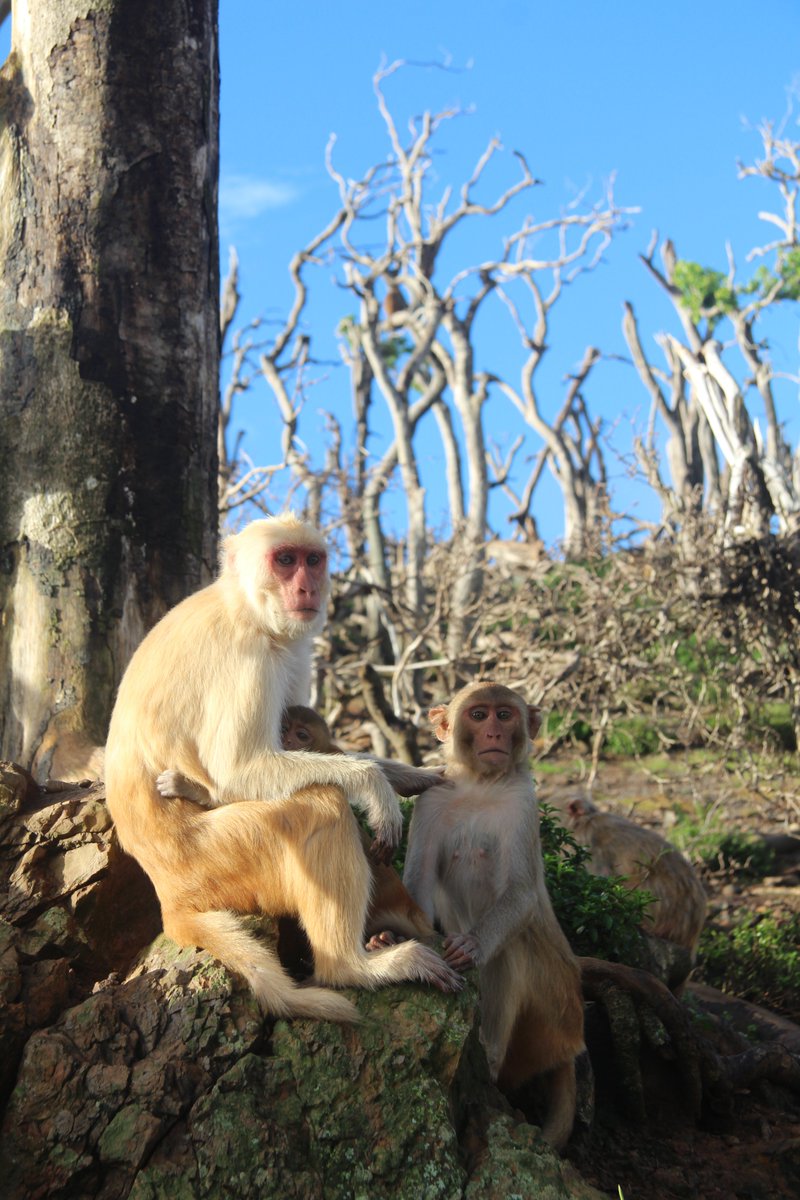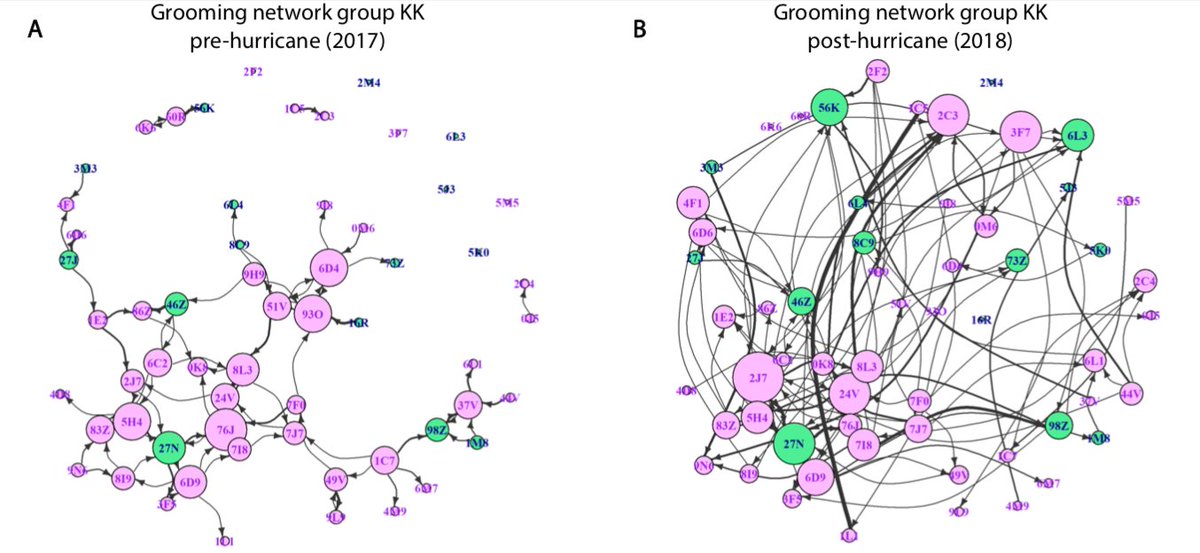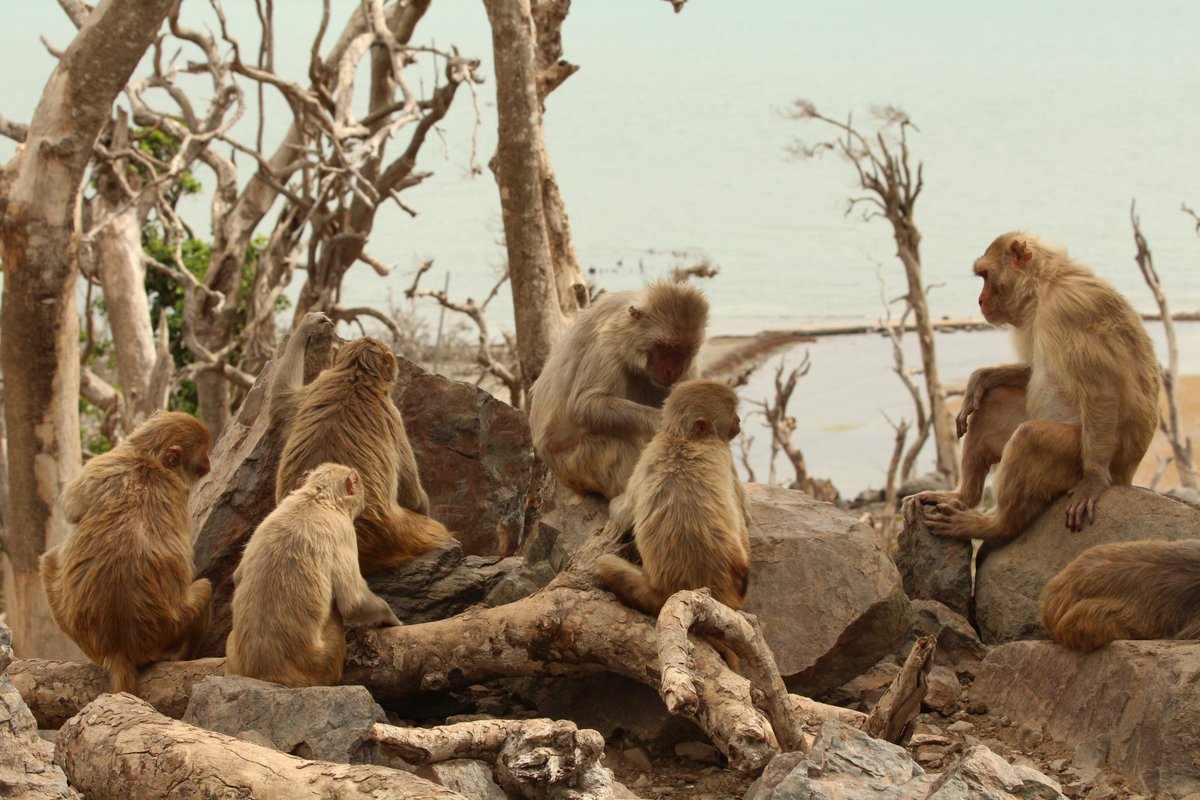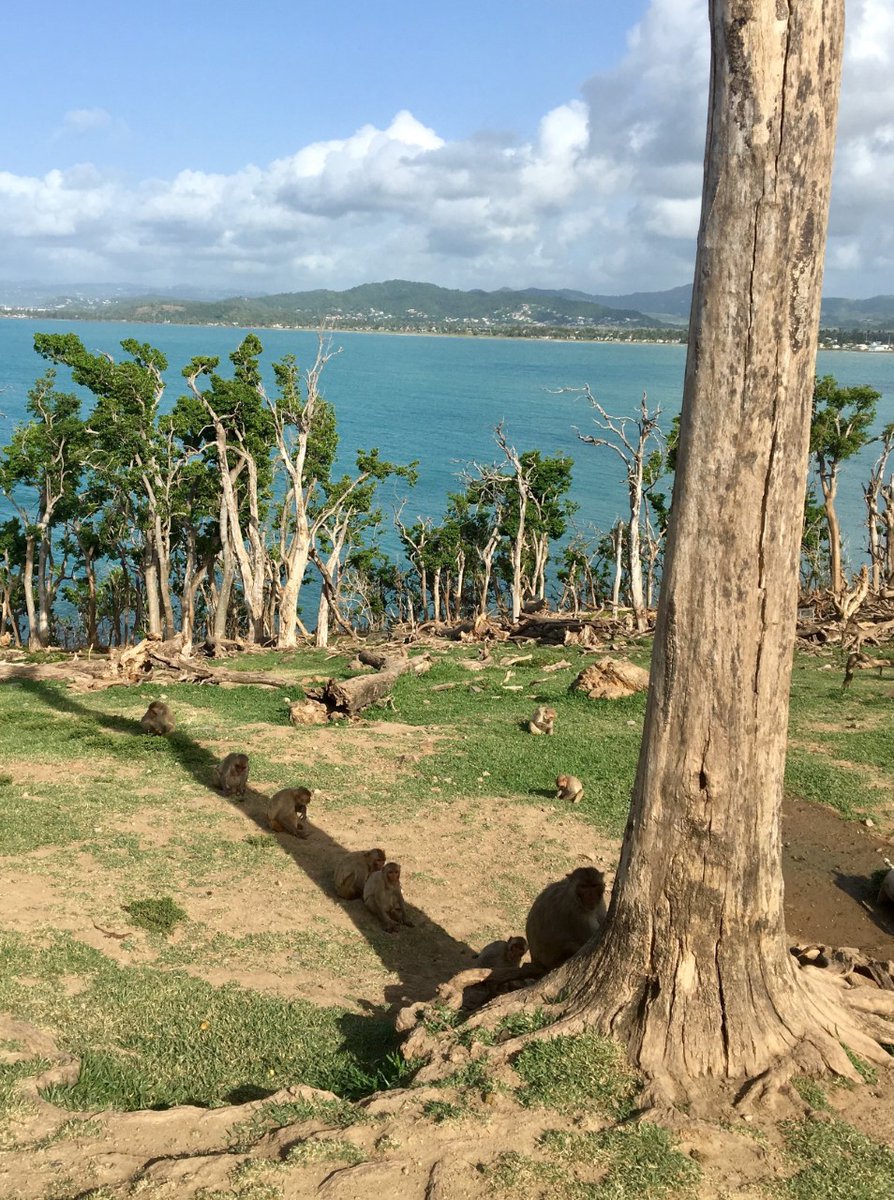Excited to share our new paper out today in @CurrentBiology!
We explore how Cayo Santiago monkeys changed their social dynamics in the aftermath of Hurricane Maria
Coauthored w/ @ljnbrent @MichaelLouisPl1 @nyuprimatology @SMack_Lab et. al.
http://bit.ly/3dNkmbE
(1/16)">https://bit.ly/3dNkmbE&q... https://abs.twimg.com/emoji/v2/... draggable="false" alt="🧵" title="Thread" aria-label="Emoji: Thread">
https://abs.twimg.com/emoji/v2/... draggable="false" alt="🧵" title="Thread" aria-label="Emoji: Thread"> https://abs.twimg.com/emoji/v2/... draggable="false" alt="👇" title="Rückhand Zeigefinger nach unten" aria-label="Emoji: Rückhand Zeigefinger nach unten">
https://abs.twimg.com/emoji/v2/... draggable="false" alt="👇" title="Rückhand Zeigefinger nach unten" aria-label="Emoji: Rückhand Zeigefinger nach unten">
We explore how Cayo Santiago monkeys changed their social dynamics in the aftermath of Hurricane Maria
Coauthored w/ @ljnbrent @MichaelLouisPl1 @nyuprimatology @SMack_Lab et. al.
http://bit.ly/3dNkmbE
(1/16)">https://bit.ly/3dNkmbE&q...
Also coauthors: @larsonsm, @monkeymullet, Julia Lehmann, @HarryHMarshall, @MarinaWatowich, Angelina Ruiz-Lambidez, Cassandra Kaplinsky, Antonia Bernau and Matt Faulder (2/16)
Hurricane Maria hit Puerto Rico in September 2017, causing massive destruction and 3000 deaths. Cayo Santiago Island, home to over 1500 macaques, was not spared. (3/16)
Our heroic field assistants on the ground resumed research almost immediately after the disaster. They noticed monkeys seemed more tolerant of their past competitors. We sought out to investigate whether monkeys became friendlier after the storm. (4/16)
We used 4 years of data on two social groups, from 3 years before to 1 year after Hurricane Maria to make within-individual comparisons of grooming and proximity behavior. (5/16)
We found that monkeys spent more time sitting next to (in proximity) and grooming each other after the hurricane compared to before. (6/16)
Surprisingly, monkeys did not reinforce existing relationships with their top partners, kin, or higher-ranking individuals, but rather extended their social network to include more partners. The less social monkeys before the storm sought out new connections the most. (7/16)
Using ERGMs, we found that monkeys formed new connections using a "path of least resistance approach", making friends with the friends of their friends and reciprocating grooming. (8/18)
We think these findings are consistent with a strategy to gain tolerance and support from the greatest number of individuals, and to benefit from broader social integration, rather than focusing on reinforcing relationships to “key” partners. (9/16)
One potential driver of this response is the formation of a large pool of partners that is mobilizable when needed, to reduce one’s vulnerability during times of instability or resource scarcity. (10/16)
On Cayo, more friends may have helped monkeys access the now rare and precious shady spots protecting them from excruciating heat. (11/16)
Monkey& #39;s increased tolerance for each other and propensity to make new friends is reminiscent of human responses observed in the aftermath of catastrophic events (12/16).
Questions remain: What are the long-term fitness consequences of making new friends, or failing to do so, in this extreme context? What are the biological traits that underlie the variation in how much monkeys invested in new relationships? (13/16)
Future work in collaboration with @jerome_sallet, @kchiou, @SMack_Lab and others will investigate the impact of this devastating hurricane on the physiology of these macaques, from genomics to brain morphology. (14/16)
This work would not have been possible without the Cayo Primate Research Center staff, and our field assistants Josue Negron and Daniel Philips! We also thank the Social Network Club at @CrabExeter for their feedback and insightful discussions. (15/16)
Finally, a big thank you to our funding sources, including @animalsocaging , @NIH , @NSF and @royalsociety. 16/16)

 Read on Twitter
Read on Twitter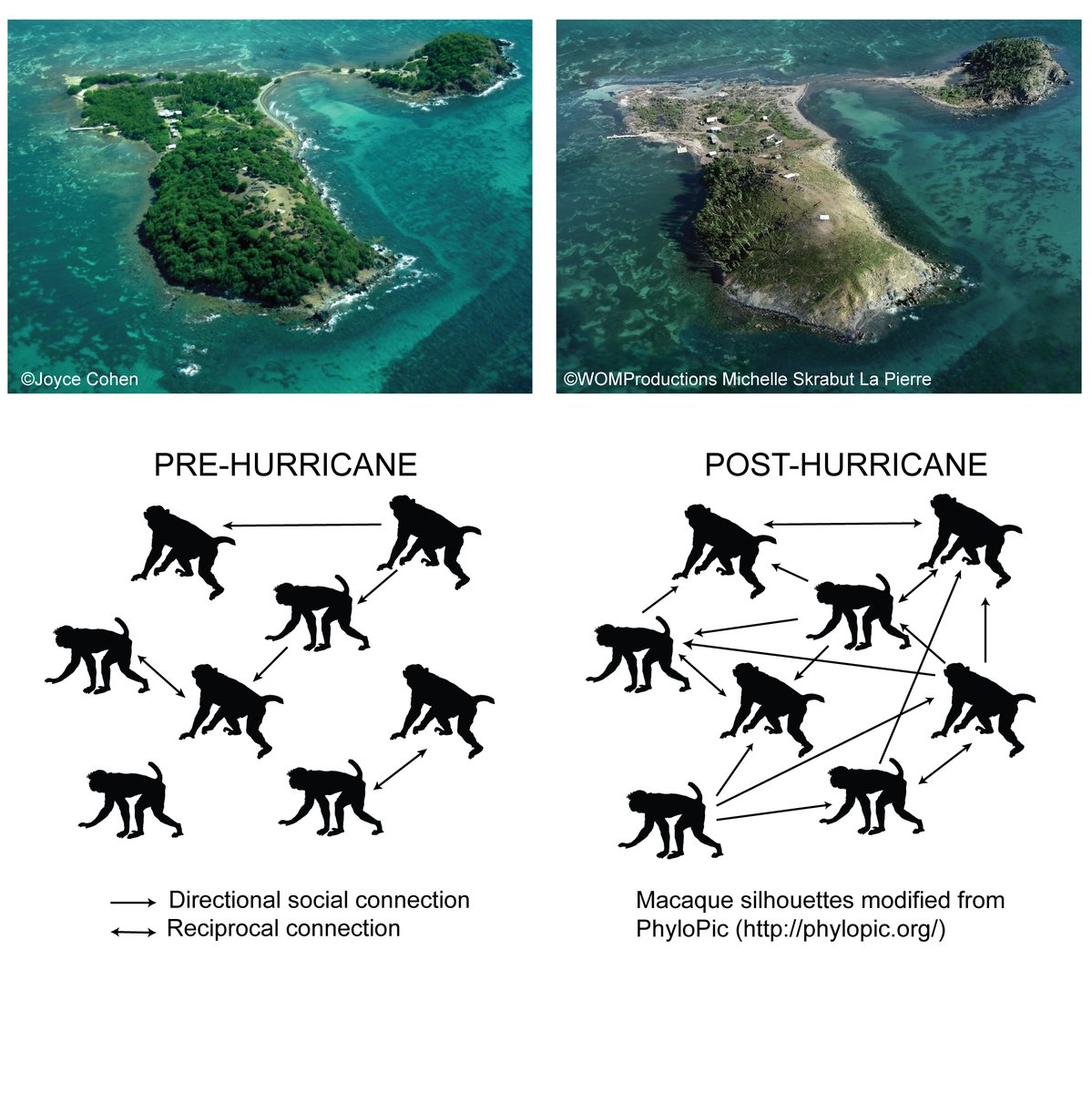 https://abs.twimg.com/emoji/v2/... draggable="false" alt="👇" title="Rückhand Zeigefinger nach unten" aria-label="Emoji: Rückhand Zeigefinger nach unten">" title="Excited to share our new paper out today in @CurrentBiology!We explore how Cayo Santiago monkeys changed their social dynamics in the aftermath of Hurricane MariaCoauthored w/ @ljnbrent @MichaelLouisPl1 @nyuprimatology @SMack_Lab et. al. https://bit.ly/3dNkmbE&q... https://abs.twimg.com/emoji/v2/... draggable="false" alt="🧵" title="Thread" aria-label="Emoji: Thread">https://abs.twimg.com/emoji/v2/... draggable="false" alt="👇" title="Rückhand Zeigefinger nach unten" aria-label="Emoji: Rückhand Zeigefinger nach unten">" class="img-responsive" style="max-width:100%;"/>
https://abs.twimg.com/emoji/v2/... draggable="false" alt="👇" title="Rückhand Zeigefinger nach unten" aria-label="Emoji: Rückhand Zeigefinger nach unten">" title="Excited to share our new paper out today in @CurrentBiology!We explore how Cayo Santiago monkeys changed their social dynamics in the aftermath of Hurricane MariaCoauthored w/ @ljnbrent @MichaelLouisPl1 @nyuprimatology @SMack_Lab et. al. https://bit.ly/3dNkmbE&q... https://abs.twimg.com/emoji/v2/... draggable="false" alt="🧵" title="Thread" aria-label="Emoji: Thread">https://abs.twimg.com/emoji/v2/... draggable="false" alt="👇" title="Rückhand Zeigefinger nach unten" aria-label="Emoji: Rückhand Zeigefinger nach unten">" class="img-responsive" style="max-width:100%;"/>
